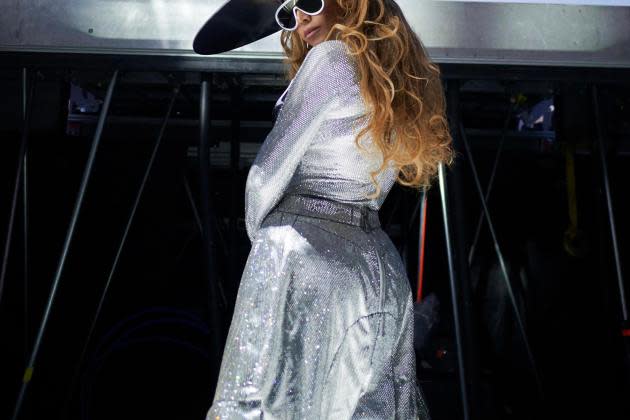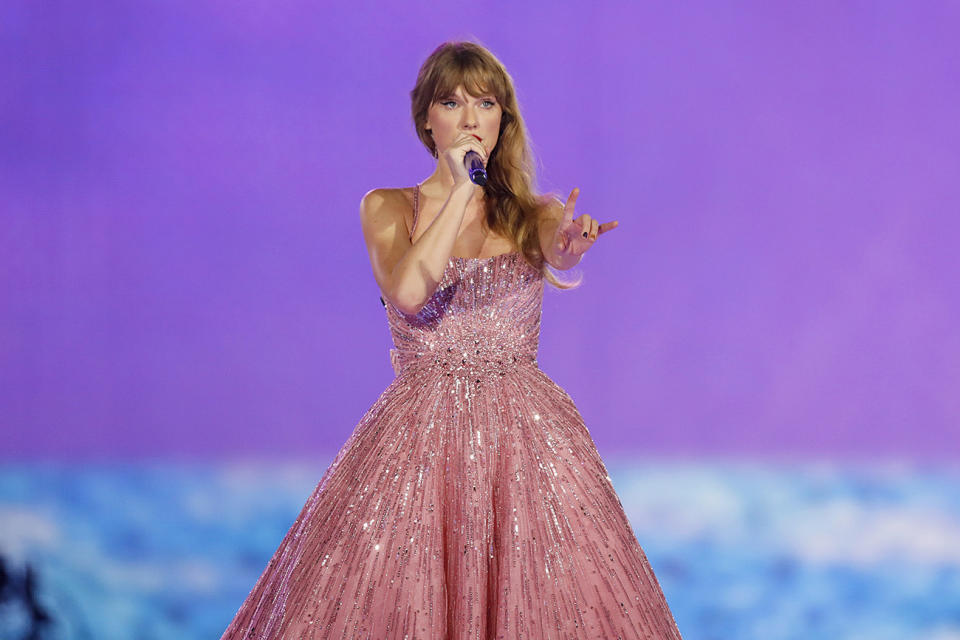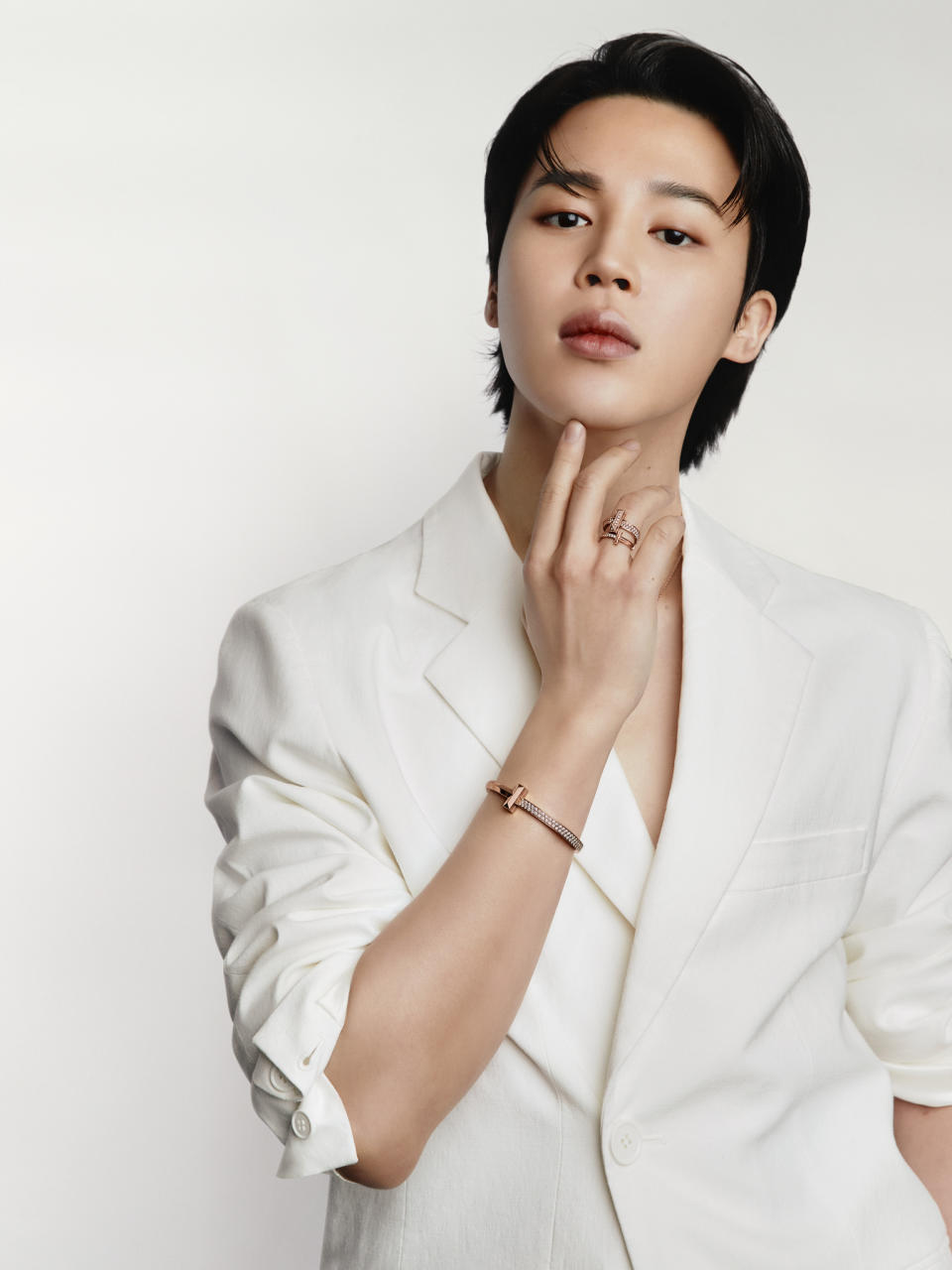Top 10 Stories of 2023: Fandom Drove Fashion and Flurry of Deals

The power of fandom drove fashion forward in 2023, and sparked a renewed frenzy to sign brand ambassadors and dress music stars.
Just take a quick look at the fashion week front rows: With Beyoncé, Zendaya and an ever-growing roster of K-pop stars causing chaos, one easily could mistake the runway shows for the Billboard Awards.
More from WWD
Top 10 Stories of 2023: Entertainment and Fashion Converge Even as the Hollywood Strike Bites
EXCLUSIVE: Louis Vuitton Watch Prize Unveils Inaugural Finalists, Finals Jury
“Music artists are able to create their tribes. People refer to themselves as ‘Swifties or ‘Barbz’ or the ‘Beyhive’ — aligning themselves with an artist in that way gives them a sense of belonging,” said Lauren Stillman, senior vice president, talent and influencer at marketing and branding agency R&CPMK. The monikers represent fandoms of Taylor Swift, Nicki Minaj and Beyoncé, respectively.
That includes buying into the style of a performer, going as far as dressing up as the artist to attend their concert. For Swift’s shows, that meant picking a favorite era, while Beyoncé fans created a sea of silver when asked to wear the shade to her sold-out Los Angeles birthday show.
Top 10 Stories of 2023 |
|---|
Entertainment and Fashion Converge |
“That highlights the impact of dressing a music celebrity and how it can filter down into driving consumer choices,” Stillman said.
With the traditional red carpet unusually dark for much of this year due to the dual actors’ and writers’ strikes in Hollywood, music artists stepped up — and stepped into that void.
The global tours of both Beyoncé and Swift not only smashed records but dominated the conversation much of the year, and each new costume change was obsessively documented online and on social media.
Swift’s “Eras” concert tour has now generated more than $1 billion in revenue, she was named Time’s Person of the Year for 2023, and the film of her concert has been nominated for a Golden Globe.

Ruslan Baginskiy worked with Beyoncé for her “Renaissance” tour, creating wide-brimmed metallic boaters worn by her and her dancers, and Madonna on cowboy-inspired styles for her “Celebration” tour.
The Ukrainian accessories and hat designer said working with such high-profile artists is “about being part of the worldwide creative energy and contemporary culture, for me and for the brand.”
“The impact is real. After working on ‘Renaissance’ we saw the Beyhive [fandom] dressing up for concerts in RB pieces — baker boy caps and boater hats, similar to the ones we created especially for Beyoncé. Headwear became a must-have for the elaborate outfits worn to the shows. People tagged us in so many pictures and in videos wearing the hats and reversing the camera on stage, it became a kind of language between us all,” Baginskiy said. “Of course that translates into visibility, followers and sales — but more than that it builds a community.”
Baginskiy added that working with such high-profile artists not only lifts his brand, but the overall accessories business as well. “The most intricate custom pieces that were part of our couture collections might not be easy to imagine off-stage, but they spark interest to headwear and to craftsmanship,” he said.
Stillman worked with Swift’s team on a series of looks from Lebanese designer Zuhair Murad, including a pink gown and a bejeweled purple bodysuit.
Designers on Swift’s stage really had their moment to shine. “So many of the designers that she used in this tour she had worn many other times before, and she’s wearing just a handful of designers. It’s very easy for these designers to have their moment and really stand out,” she said.
The numbers back it up.
Murad’s appearance on Swift’s stage resulted in 4.4 billion media impressions with an estimated media value of $2.9 million — and that’s not even including TikTok.
“It’s about building brand awareness. Social media is the new water cooler, and you just have to be part of what’s capturing the collective attention, and so much of it is around music right now,” Stillman said.
Olivia Rodrigo and K-pop stars are other examples of conversation and cultural drivers, she said.

But while Swift and Beyoncé made a fashion splash with their concert tours, the real rush by luxury brands was to see which K-pop or Asian star they could sign as an ambassador. A day did not seem to go by without an announcement of a new face.
At Louis Vuitton alone there is BTS’ J-Hope, Stray Kids’ Felix, Got7’s Jackson Wang, NewJeans’ Hyein and the group Le Sserafim as brand ambassadors. The scramble for talent is such that they will even sign relatively untested talent — see boy band Riize joining the house as global ambassadors barely three months into their career.
BTS’ Jimin is signed to two LVMH Moët Hennessy Louis Vuitton brands: Dior and Tiffany & Co. Blackpink’s Jisoo is also signed to Dior, while Valentino has BTS’ Suga, Loewe brought NCT’s Taeyong on board and Celine has BTS’ V and Blackpink’s Lisa, to name just a few.
Groups have also gotten in on the game. Enhypen joined Prada as brand ambassadors, while Tomorrow x Together signed on with Dior Men’s and had their Lollapalooza stage outfits designed by Kim Jones.
Even with movie stars attending the Cannes Film Festival, Blackpink’s Jennie dominated the red carpet, generating $1.9 million in media impact value for Chanel.
The K-pop fandoms are young and particularly loyal, said Euny Hong, author of “The Birth of Korean Cool: How One Nation Is Conquering the World Through Pop Culture.” Their fans are eager to snap up items seen on their favorite idols.
The cultural influence of K-pop stars has become a driving force for the elusive Gen Z consumers weaned on social media, particularly as the generation grew up watching non-English language shows on Netflix. It also resonates from Chicago to China and everywhere in between.
“This generation doesn’t really care about linguistic or cultural barriers. They don’t have the same sense of ‘foreignness.’ That’s the audience that they’re going after,” Hong said. “All the luxury brands, whether they’re American or French, have the same mentality when it comes to that consumer — start them early with a lipstick and eventually they will move to a dress.”
Hong noted that capturing that aspirational consumer in hopes of instilling brand loyalty that will result in larger purchases down the line is not a new phenomenon, but K-pop stars’ global appeal helps generate brand loyalty far beyond any region.

Playing into that trend, luxury brands staged a number of shows and increased their presence in South Korea during major cultural events such as Frieze Seoul, hoping to capture some of the K-pop shine.
Louis Vuitton staged a monumental pre-fall show there in April, turning Seoul’s Jamsugyo Bridge into a runway, and Gucci staged its cruise show in the South Korean capital last May in front of the city’s Gyeongbokgung Palace.
Hong emphasized that fan loyalty results in moving merchandise. “If a K-pop star wears a Moncler jacket, it will be sold out the next day,” she said.
— With contributions from Lily Templeton
Best of WWD


